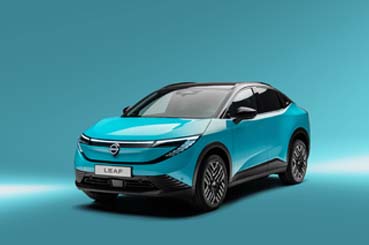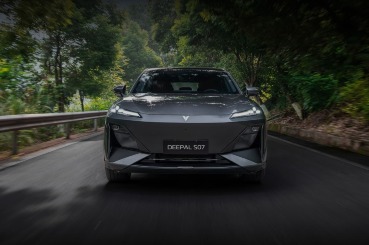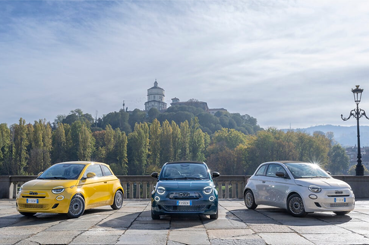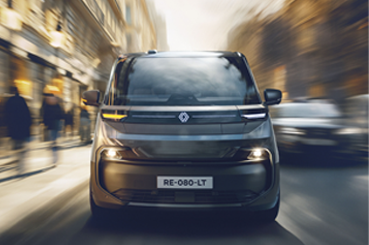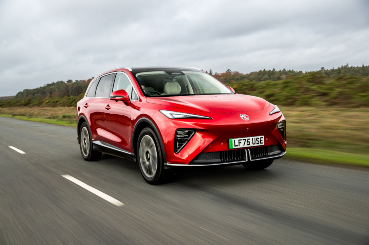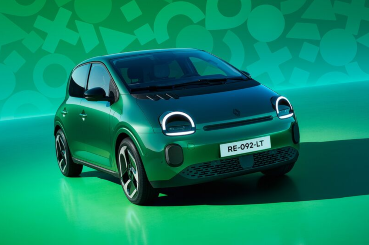
Green NCAP is a new independent initiative that aims to promote the development of cars which are clean, energy-efficient and less harmful to the environment.
Launched by Euro NCAP, the independent company which rates the safety of vehicles, the Green NCAP scheme uses a similar star rating system to show the difference between official and real-world efficiency.
It is hoped this rating system will give customers clear information about a car’s green credentials, making it easier to choose the right car for your requirements.
Promoting a Cleaner Future
Green NCAP began in 2019 with a pilot scheme. Following on from the successful pilot, more rigorous and broader testing was introduced for 2020.
The testing scheme aims to provide clear and easy to understand information about how ‘environmentally-friendly’ a car is in real-world situations, to:
- Improve air quality
- Reduce global warming
- Improve our understanding of the impact a car may have
The testing procedure is more stringent than the current legislative emission and efficiency tests.
What’s more, it aims to offer a more real-world approach that is not just based on a statutory laboratory test. By doing so, it hopes manufacturers will strive to produce cars that perform as well in the real world as they do the legislative laboratory tests.
5 Star Rating
Like the Euro NCAP testing scheme, Green NCAP will use a star rating system, with five stars awarded to the most environmentally friendly models.
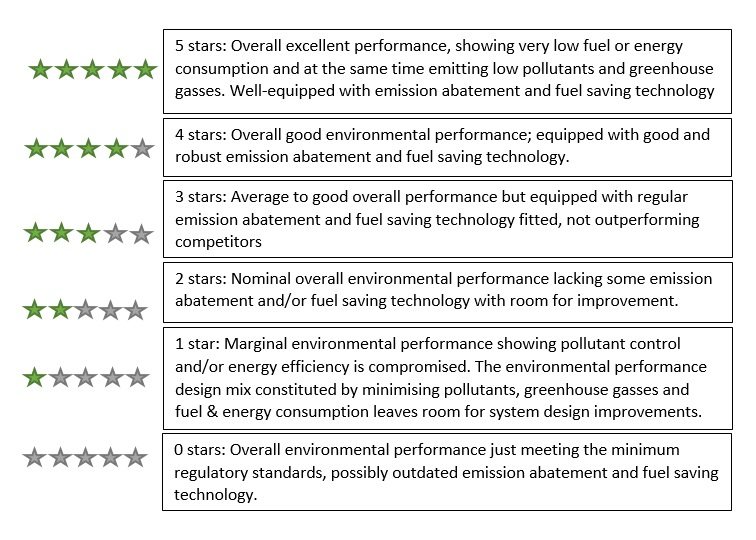
Since the beginning of 2020, half stars have been introduced to indicate a slight improvement in performance over another car.
The Green NCAP test currently focuses on three different areas including health (measures pollutant emissions), consumer spending (measures energy efficiency) and the earth’s future (measures greenhouse gases). Currently, each area is weighted evenly, so to achieve a good overall star rating, the vehicle must perform well in all areas tested.
Indexes
The below three indexes are the second level at which cars can be compared, with each index having a score out of 10.
10 indicates the best possible performance, 0 indicates the worst.
Clean Air Index
The clean air index looks at the performance of mitigating pollutant emissions. It measures gases and particulate matter emitted from the tailpipe, which are harmful to health.
A higher score indicates good performance and indicates the car mitigates emissions well.
Energy Efficiency Index
The energy efficiency index looks at how well energy is converted to propel the vehicle. A high score indicates less energy is needed per unit distance.
Greenhouse Gas Index
The Greenhouse Gas index monitors the emissions of so-called greenhouse gases; carbon dioxide, nitrous oxide and methane from a car. These are the three main gases responsible for trapping heat energy within the earth’s atmosphere, which is causing a temperature rise.

The Testing Procedure
Every vehicle undergoes several different tests to assess how it performs in different situations which mimic real-world driving.
Laboratory Tests: In the laboratory tests, the car is put on a chassis dynamometer ‘rolling road’ and driven through a prescribed test cycle. During the test cycle, the exhaust gases are collected, and at the end, they analyse these to determine the polluted emissions, particulate matter and greenhouse gases.
Road Tests: The road-test is based on the Real Driving Emissions (RDE) assessment but offers an even better representative of real driving experiences with more realistic traffic situations mimicked. Again tailpipe emissions are collected throughout and analysed at the end of the drive.
Robustness: The robustness looks at the ability of the exhaust after treatment system to perform efficiently under a wide variety of operating conditions. Both lab and road tests are taken into account.
Driving Resistance: The driving resistance comprises of the mass of the vehicle, aerodynamic drag and rolling resistance of a vehicle. It is one of the main parameters in the energy demand of a vehicle, so has a massive impact on overall efficiency. The inclusion of this test will help to promote light, fuel-efficient cars.
An Independent Test
Just like Euro NCAP, the Green NCAP test is independent, so to ensure fairness Green NCAP sources rental cars as test vehicles. Using rental vehicles also ensures manufacturers cannot make any changes to the vehicle before testing, which may sway the results.
Plus as the majority of rental cars are well-maintained they offer the best representation of real cars on the road for testing purposes.
Another reason for using rental cars is that to monitor emissions and efficiency for ‘real-world’ results test cars need to have a few thousand in d miles on the clock. This running in period ensures that things still work as they should i.e. the valves close fully, and the catalyst is working. So low mileage rental vehicles are the perfect option.
The Scope of Green NCAP
Green NCAP aims to test as many vehicles as possible to help consumers make an informed decision when buying a new car. However, as small variations can massively affect the emissions and efficiency of a vehicle, it means every variant of a model would need to be tested and scored individually.
This is a huge undertaking, so to begin with Green NCAP aims to focus on the most popular models and variants to maximise the information available.
Green NCAP is also currently developing a testing procedure for plug-in hybrid models so that they can be tested in their rating system. Plug-in hybrid vehicles are more complex to test as it is necessary to establish the state of battery charge before any like for like comparisons can be made.
Testing will continue to evolve in response to changes within the industry. As a result, Green NCAP has already cautioned that care should be taken when comparing cars from different years.


